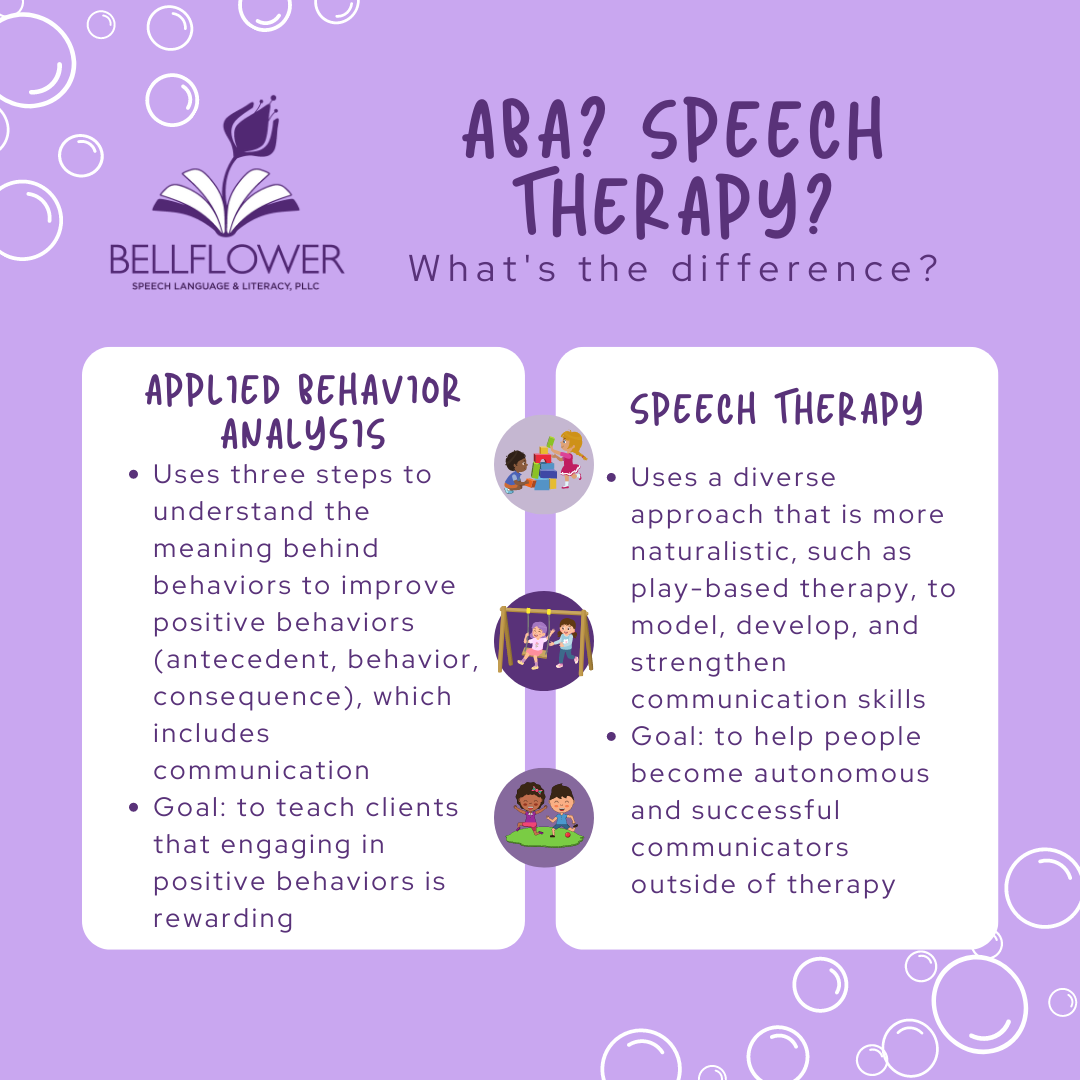Routines are the perfect opportunity to work on your child’s speech and language. First of all, routines are something you’re going to be doing everyday, which means that you don’t need to add one more thing into your day (honestly, who has time for that?). And, it doesn’t require sitting at the table, drilling them, so working on their speech and language may feel a little more enjoyable and less like you’re “testing” them. Keep reading to see how you can easily incorporate speech and language into your daily morning routine, while still enjoying quality time with your child!
Read MoreThere are many different types of therapies available for children with communication needs. Two of the most common therapies are Applied Behavior Analysis (ABA) and speech therapy. ABA and speech therapy are two unique approaches to treating speech, language, and communication issues. While these strategies have their differences, they can also complement each other. ABA and speech therapy can both be used to treat people with speech and language difficulties. ABA therapists and speech-language pathologists (SLPs) can work together in many ways to deliver comprehensive care.
Read MoreWhen you envision a speech therapy session, you often imagine a therapist sitting at a table with a child practicing sounds over and over. You may also picture sitting on the floor with some toys and teaching through play. The truth is, both ways are possible!
Read MoreAt the end of a long day there are still plenty of ways to work on language skills that don’t require sitting at the table! Below are some language building ideas that you can incorporate into your bedtime routine while enjoying quality time with your child!
Read MoreA communication friendly environment is a space that provides opportunities for language and promotes communication in children. The environment in which a child learns can be an important factor in supporting their communication and language development. The goal of structuring the learning environment is to ultimately support speaking and listening skills, social language skills, and play skills. Whether you have a dedicated room in your house or a toy corner to sit and play, there are many ways that you can structure that space to help foster and promote language!
Read MoreBy the age of 5, most children will reach the final stage of play development. At this time, a child is able to integrate all of their developmental skills in order to engage in full cooperative play. While your child may have reached the last stage of play development, that doesn’t mean that play time is over! Far from it! Play will continue to be the primary way that your child will learn and it is a critical part of how they explore social, emotional, and thinking skills.
Read More





